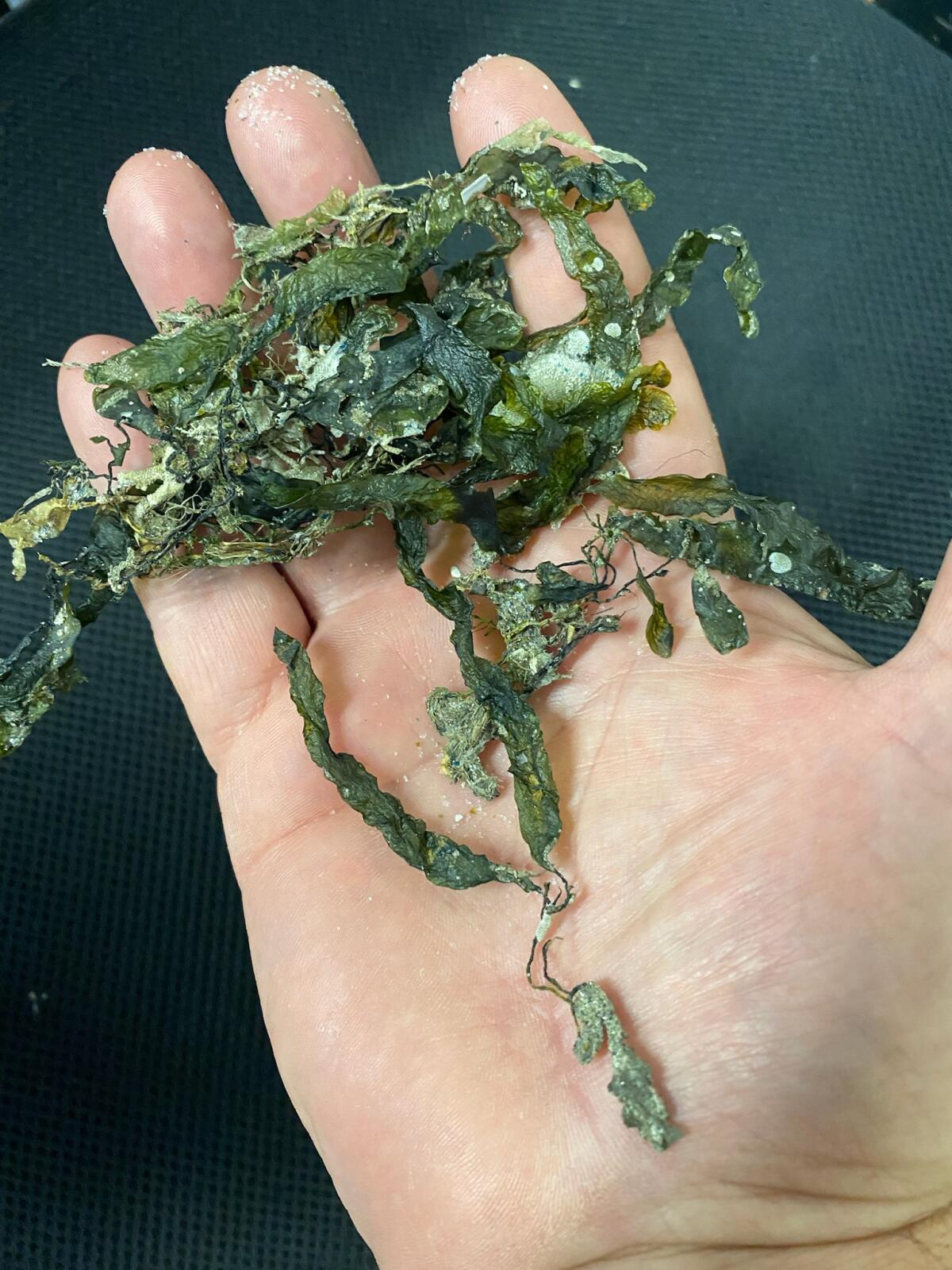Commentary: Funding issues threaten urgent invasive algae removal efforts in Newport Bay

- Share via
An invasive algae species in Newport Bay has the potential to disrupt Orange County’s entire marine ecosystem and coastal economy if not dealt with swiftly.
Since 2021, and possibly even earlier, Newport Bay has grappled with an aggressive and invasive algae species known as Caulerpa prolifera. While the Southern California Caulerpa Action Team (SCCAT) has attempted to eradicate the algae, the problem persists due to Caulerpa’s ability to adapt and spread quickly.
SCCAT is comprised of governmental agencies, marine biologists, consultants and our organization, Orange County Coastkeeper. The group united over a shared concern for the safety of our coastal waters. Yet, despite the group’s expertise and commitment to eradication, funding has been the dominant issue.
Fortunately, money has been made available to fund eradication efforts, a financial breakthrough that would undoubtedly make a significant impact on containing the invasion. However, due to bureaucratic processes, the money could take up to a year to be delivered.
Such delays are unacceptable, as Caulerpa does not pause its relentless growth for bureaucratic red tape. As each day passes without effective action, the threats Caulerpa pose to Newport’s waters, wildlife and economy intensify.
If left unchecked, Caulerpa could out-compete eelgrass, potentially resulting in the loss of vital habitat for numerous species, including young sports fish, lobsters and octopuses. Unlike eelgrass, Caulerpa does not offer the same level of habitat and food sources, further disrupting the delicate balance of our marine ecosystem. In fact, Caulerpa contains toxins that repel most predators outside its native range.
Caulerpa grows through fragmentation, making the increased harbor activity during summer a huge threat. Additionally, the invasive algae has demonstrated an alarming ability to survive colder waters and occupy deeper areas than previously recorded. Considering its adaptability to changing conditions, the potential impact of Caulerpa on our marine ecosystem within the next few months is a cause for serious concern.
The longer we delay eradication, the more arduous and costly it becomes to reclaim our waters from this insidious invader. During a previous Caulerpa invasion in the early 2000s, it took six years and $7 million to fully eradicate the species.
The time has come for immediate action and robust financial support. We cannot allow bureaucratic delays to impede our ability to protect Newport Bay from the destructive grip of Caulerpa.
As a concerned community member, I call upon our representatives to expedite this process and prioritize allocating the necessary funds for Caulerpa’s eradication. The consequences of inaction are too grave to ignore. Together, we can free Newport Bay from the looming threat of Caulerpa prolifera.
Garry Brown is the founder and president of Orange County Coastkeeper, a nonprofit organization that has protected clean water in the region for over two decades.
All the latest on Orange County from Orange County.
Get our free TimesOC newsletter.
You may occasionally receive promotional content from the Daily Pilot.



